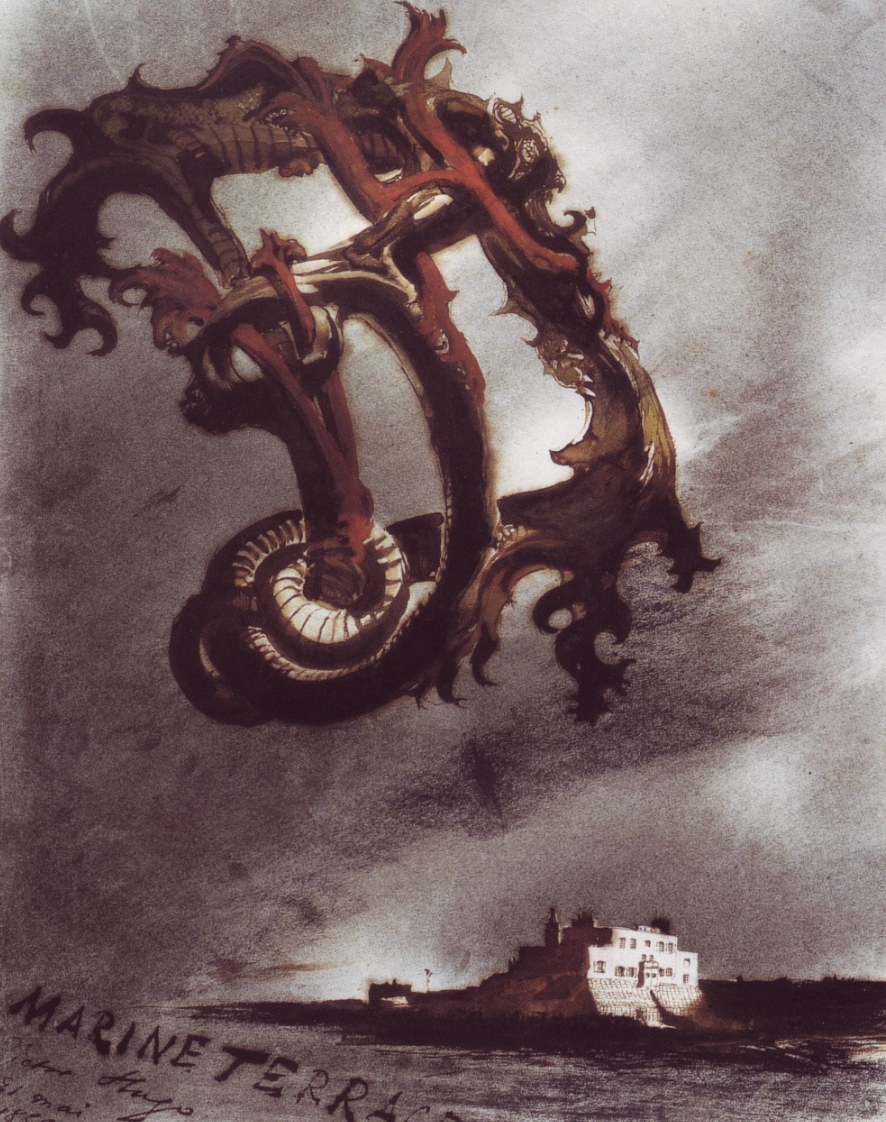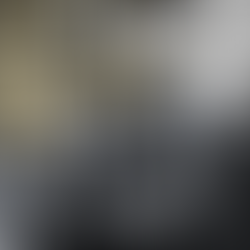The Surreal Sketches of Victor Hugo: When Coffee, Coal, and Genius Met Paper
- Daniel Holland

- Jul 11
- 4 min read
Updated: Jul 16

Most people know Victor Hugo as the towering literary figure behind Les Misérables and The Hunchback of Notre-Dame, a man whose pen gave voice to the struggles of revolution, justice, and unrequited love. But fewer know that he was also a prolific visual artist—an eccentric, secretive one at that—who churned out thousands of moody, imaginative drawings using whatever came to hand, from traditional pen and ink to soot, coal dust, and even coffee.
Yes, coffee.
Hugo was a man of many talents. Poetry, novels, political activism, drama—he mastered them all. Yet in quiet moments, often away from the public gaze, he turned to drawing not for fame or recognition, but for solace, expression, and, it seems, play. Over the course of his life, Hugo produced more than four thousand drawings—surreal cityscapes, stormy seascapes, haunting architectural fantasies—that were almost entirely unknown to the public during his lifetime. He deliberately kept them private, fearing that the world might take him less seriously as a writer if they knew how seriously he took his ink.

Drawing in the Shadows
Hugo’s drawings don’t look like the work of a Sunday sketcher or someone idly doodling in the margins. They are bold, shadowy, strange. They reflect the gothic temperament of his writing but speak in an entirely different register. His towers and bridges seem to loom out of a fog. His coastlines and ruins are spectral, fragmentary, more like memories than real places. Sometimes you’d swear he was sketching from a dream.
And his methods? Unorthodox to say the least.
He often refused to draw with his dominant hand, choosing instead to use his left, or even to work blind—sketching without looking at the page. When he lacked traditional materials, he improvised. Ink might be replaced by soot or charcoal. Coffee grounds were pressed into service to add atmospheric washes. What emerged from this chaotic method was a kind of proto-surrealism, decades ahead of its time, improvised and automatic, like something André Breton might later have admired.

A Process Like Alchemy
According to his son, Charles Hugo, watching his father draw was like witnessing an alchemical ritual. He described how Victor would sit at the table, his tools arranged in front of him, and simply begin—no planning, no sketching, just a confident line launched onto a blank page. But he wouldn’t start with the obvious. He might begin a forest with a single tree branch. A town might start with a weathervane, from which a gable would grow, and then a roof, a wall, a skyline. The image would slowly emerge as if developed in a darkroom, each detail sharpening in a swirl of shade and light.

When the composition was nearly complete, Hugo would sometimes finish it with a flourish: a splash of black coffee. This wasn’t a joke or a mishap—it was deliberate. The blotchy stains added depth and mystery, seeping into the fibres of the paper like some kind of sepia fog.
The result, Charles wrote, was always “unexpected and powerful… often strange, always personal,” and reminiscent of the dark etchings of Rembrandt or the crumbling grandeur of Piranesi’s ruins. Except unlike those artists, Hugo wasn’t formally trained, nor was he exhibiting or selling his work. These drawings were, for the most part, shared only with friends and family—little pieces of himself made tangible through ink and stain.

Art as Private Practice
It’s worth considering how different the 19th-century art world might have been if Hugo had allowed his visual work to enter public view. But he feared distraction. He didn’t want anything to detract from his political writings or novels. At the height of his fame, he was already a subject of fascination and controversy—an exile, a national symbol, a voice of conscience. The drawings were his refuge, not his platform.

Still, they were not entirely unknown. Friends like Théophile Gautier and the painter Eugène Delacroix admired them. Some even speculated about his potential as a professional artist. Hugo himself, however, insisted on drawing for himself, as a private act of creativity, unmoored from the demands of publication or public judgement.

Legacy of a Secret Sketchbook
Today, Hugo’s artwork is widely regarded as visionary. Modern critics have found in his brooding compositions a proto-modernist sensibility—a willingness to experiment, to blur boundaries, and to use visual media as a vehicle for emotion rather than representation. The Surrealists loved him. André Breton included one of Hugo’s drawings in his landmark 1936 exhibition on Surrealist art. And contemporary viewers have come to appreciate how Hugo’s drawings reflect not just his talent, but his temperament: solitary, restless, imaginative, and always searching.

In the end, it’s tempting to say that Hugo’s drawings mirror his novels—dark, romantic, fantastical—but that would undersell them. They aren’t illustrations of his books, and they don’t serve as footnotes to his fiction. They exist in their own world, full of shadowed towers and storm clouds, made from ink and soot and the stains of a morning coffee. They are the quiet sketches of a man who could never stop creating, even when the world wasn’t watching.
Hugo's drawings are collected in a 1998 book, Shadows of a Hand.
Sources
– Drawings by Victor Hugo (The Morgan Library & Museum)
– Victor Hugo: The Inner World of a Literary Genius, Musée d’Orsay Exhibition Notes
– Charles Hugo, Memoirs and Correspondence










































































































Comments